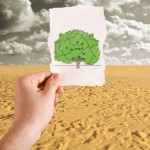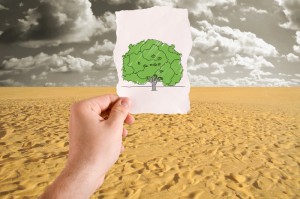Begin Again: A Lesson from the High HolyDays
 The Jewish High HolyDays have wrapped. They started with the New Year, Rosh Hashanah, followed by Yom Kippur, the Atoning. They concluded with the festival of Sukot, and finally the celebration of Simchat Torah. Each of these offers us unending insights. Together, they also give us a lesson in their sequence.
The Jewish High HolyDays have wrapped. They started with the New Year, Rosh Hashanah, followed by Yom Kippur, the Atoning. They concluded with the festival of Sukot, and finally the celebration of Simchat Torah. Each of these offers us unending insights. Together, they also give us a lesson in their sequence.
The first is Rosh Hashanah. It is a celebrating of a New Year. But rather than simply being a turn in the calendar, it can be thought of as a new beginning – a way of beginning again. What does it mean to begin anew? How many times have we overstepped with someone and suggested: “let’s just start over”? How many times have we overstepped with own self and thought: “Tomorrow is a new day, I’ll just start again”? For me, as I dream the dream of Rosh Hashanah, it is not just that a new year begins, but rather a reaffirming of the promise that we can Begin, Again. And what a wonderful promise and gift this is – to never be stuck, and to always be able to evolve. Of course it is a celebration, because it is a joyful attesting of our relationship with God and the Universe of this gift that we can always start over.
So, how does one begin again? The High HolyDays don’t simply commence with Rosh Hashanah; Jews prepare for the upcoming days the entire month leading up to their beginning. The preparation includes a blowing of the Shofar each morning after weekday services until the day before Rosh Hashanah. What is the blowing of the horn, but to wake us up? How can we begin again if we are asleep to that which needs to be discarded, and that which needs to be nourished? To begin again is to first search oneself, and to assess where we are in our path. It is also to wake up to the remembering that we can, indeed, begin again. This process of preparation is heightened with Selichot, prayers of forgiveness, begun in communal service the Sunday before Rosh Hashanah (after which the prayers are continued to Yom Kippur). Communal, because beginning again is done in relationship to our others – our families and communities. How we choose to be – whether we begin anew or don’t, and the course we take to begin again – affects not simply ourselves, but all those we are in relationship with.
So now we’re ready for Yom Kippur. To many this is a dark time of atoning. As Rabbi’s Gershon Winkler and Miriam Maron explain, however, Yom Kippur has another reading – it is a time of assessment. Yom Kippur is a time in which God looks at each of us intently, seeing where we are, how we’ve fared in the last year, and what we need for the upcoming year. It is a next level up, one could say, of the assessing, the waking up, the beginning again. Whereas we have just undergone the process of looking at ourselves, and ourselves in relationship to our communities, now we look at ourselves in relationship to the spiritual. Where are we with our spiritual self?
After Yom Kippur is the curious festival of Sukot – the time when a temporary structure is built outside with a roof of palm fronds under which we eat each meal, and perhaps sleep, for seven days. As we sit in this temporary space we are reminded of the fleeting nature of time. Time is not fixed – that wouldn’t allow us to begin again. Instead it is flexible and fluid. It is also a remembering of the cycles of time – the number seven, itself, is a number of a complete cycle, after which there is only to begin again. Sukot is a harvest festival – it is a time when bounty has been gathered for which there is great celebrating and indulging. And yet, winter is at its heels. The days are drawing longer and soon the earth will be seemingly barren, yielding no harvests. However, beneath her surface there are seeds that have just been planted that are beginning their own process of growth, to show themselves in spring. This paradox of existing – outward abundance, and then the going in when things seem barren and yet something is always growing – is held at the same moment in Sukot. As I dream this dream we are now focusing our attention to our relationship to our planet, where I am reminded that even the earth begins again. And I ask – what seeds have I planted during these days of beginning again?
Finally, The High HolyDays culminate with Simchat Torah. In this night the Torah, which has been read a little bit all through the year in sequence, is finished – and immediately started again that moment. The last sentence is read, and we turn to the first again, which is Beresheit, or beginning – the chapter of Creation. Begin, again. Creation. In this ecstatic celebration we dance seven dances – another cycle – a dance of celebrating the beginning, again, of choosing to be renewed and of the promise of being able to take the choice of renewal: The ability to continually create ourselves within us, within our communities, within our relationship to God/the Universe, within our planet.
The sequence of the High HolyDays tells us a lot. There’s another lesson. The days of, and between, each of these festivals are long. Unlike Thanksgiving, say, they don’t take place in a day. Instead, they are a process. Creation is a process. Seeds planted have to have time to grow, emerge, become. To begin again is not simply a Big Bang moment – though great shifts can happen that quickly – it is a continual, ongoing process of searching, choosing, becoming. It is a movement to celebrate. Never be stuck. Begin, again.
